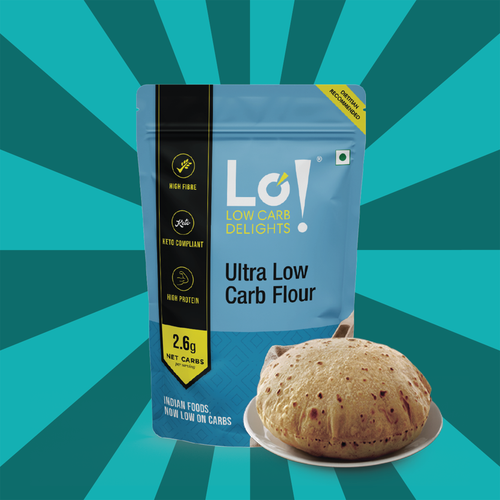
How does the digestion and absorption of carbohydrates work?
Carbohydrates are the most important part of our diet, often underestimated in their vital role. Imagine them as the fuel that powers our daily activities.
In our fast-paced lives, it's easy to overlook the significance of what we consume, but understanding carbohydrates is key to unlocking sustained vitality. We'll delve into the intricacies of how our body processes these compounds, ensuring we not only eat but also absorb the energy they provide.
Get ready to appreciate the unsung champions of our diet, as we explore the dynamic world of carbohydrates and their impact on our daily lives. Let's demystify the process of digestion and absorption, shedding light on the remarkable journey from plate to energy. So, buckle up as we embark on this enlightening adventure into the realm of carbohydrates.

Digestion of Carbohydrates
As we take that first delicious bite of a carbohydrate-rich meal, the journey of digestion begins. It all starts in the mouth, where the magical process of breaking down complex carbohydrates kicks off. The enzyme amylase, a powerful catalyst present in saliva, starts to work its charm, initiating the transformation of starches into simpler sugars.
Chewing plays a pivotal role in this process. It's not just a mechanical action but a crucial step in carbohydrate digestion. As we savor each bite, we are unknowingly aiding the breakdown of intricate carb structures into more manageable components. The smaller the particles, the easier it becomes for enzymes to further dismantle them.
The adventure continues in the stomach, where amylase soldiers on, complemented by other enzymes. It's like a culinary symphony happening inside us. The complex carbohydrates are steadily broken down into sugars that our body can readily absorb and convert into energy.
So, the next time you relish your favorite carbohydrate-packed dish, take a moment to appreciate the intricate dance of enzymes and the importance of chewing. It's not just about the taste; it's about setting the stage for optimal digestion, ensuring that the energy locked in those carbs becomes readily available for your body's needs.
Absorption of Carbohydrates
Now that our culinary masterpiece has been broken down into simpler sugars, the spotlight shifts to the small intestine. This unassuming part of our digestive system plays a pivotal role in ensuring the energy-packed sugars are absorbed into our bloodstream.
Picture the small intestine as a bustling marketplace, and the broken-down carbohydrates as the goods being transported. The villi, tiny finger-like structures lining the intestine walls, act like diligent merchants, absorbing glucose and other simple sugars with remarkable efficiency.
As we visualize this intricate process, we are fascinated by how these villi increase the surface area available for absorption. It's like nature's way of maximizing efficiency, ensuring that no valuable energy goes to waste. The absorbed sugars then make their way into the bloodstream, becoming readily available for the body's energy demands.
In essence, it's the small intestine's role as the absorption hub that transforms our meals into a source of vitality. The orchestrated efforts of enzymes, villi, and the bloodstream result in a seamless absorption process, providing us with the energy needed for our daily endeavors. So, the next time you savor a carb-loaded treat, remember the small intestine's silent but significant contribution to making that energy accessible.
Ideal Time to Consume Carbohydrates
Morning:
Kickstart Metabolism: Consuming carbs in the morning helps boost your metabolism after fasting overnight.
Energy for the Day: Provides the energy needed for daily activities and mental focus.
Before Exercise:
Fuel for Workouts: Carbohydrates provide a quick source of energy, enhancing performance during physical activity.
Improve Endurance: Helps sustain energy levels for prolonged exercise sessions.
After Exercise:
Replenish Glycogen Stores: Carbs help restore muscle glycogen levels that are depleted during workouts.
Speed Up Recovery: Aids in muscle recovery and reduces muscle soreness.
With Protein:
Balanced Meals: Combining carbs with protein helps stabilize blood sugar levels and promotes satiety.
Enhanced Nutrient Absorption: Protein helps slow down the absorption of carbs, preventing spikes in blood sugar.
During the Day:
Sustained Energy: Spread carbohydrate intake throughout the day to maintain consistent energy levels.
Prevent Cravings: Regular intake can help avoid sudden hunger pangs and unhealthy snacking.
Avoid Late Night:
Limit Before Bed: Consuming carbs late at night can lead to excess energy storage as fat and disrupt sleep patterns.
Lower Metabolism: The body’s metabolism slows down at night, making it less efficient at processing carbohydrates.

Inside Your Gut: Carbohydrate Digestion and Nutrient Absorption
Understanding the digestion and absorption of carbohydrates isn't just a lesson in biology; it's a roadmap to optimizing our overall health and well-being. We've witnessed the intricate dance of enzymes breaking down complex carbohydrates in the mouth and stomach, followed by the small intestine's role as the absorption hub. Chewing and the remarkable efficiency of villi were revealed as unsung heroes in this digestive saga.
Maintaining a healthy carbohydrate balance emerged as the golden rule. Choosing complex carbohydrates, embracing fiber-rich foods, and practicing portion control were unveiled as simple yet powerful strategies. The idea is not restriction but rather conscious choices that harmonize with our body's needs.
As you embark on your journey, armed with newfound knowledge, we encourage you to make informed choices about your carbohydrate intake. It's not about following a rigid set of rules but about creating a lifestyle that supports your health goals. By integrating these insights into your daily routine, you pave the way for a balanced and healthy lifestyle—one where carbohydrates play a pivotal role in fueling your energy and vitality.
This Blog post is an initiative by Lo! Foods, to provide accurate and Nutritionist / Doctor approved information related to Health. Lo! Foods is India's leading brand for Everyday Functional Foods. Foods designed for specific Health conditions or Needs. Lo! Foods also runs India's largest range of Low Carb Healthy Cloud Kitchens, under the brand names of Lo!, ProteinChef, ATH (All Things Healthy) and DiabeSmart.















Leave a comment
Your email address will not be published.